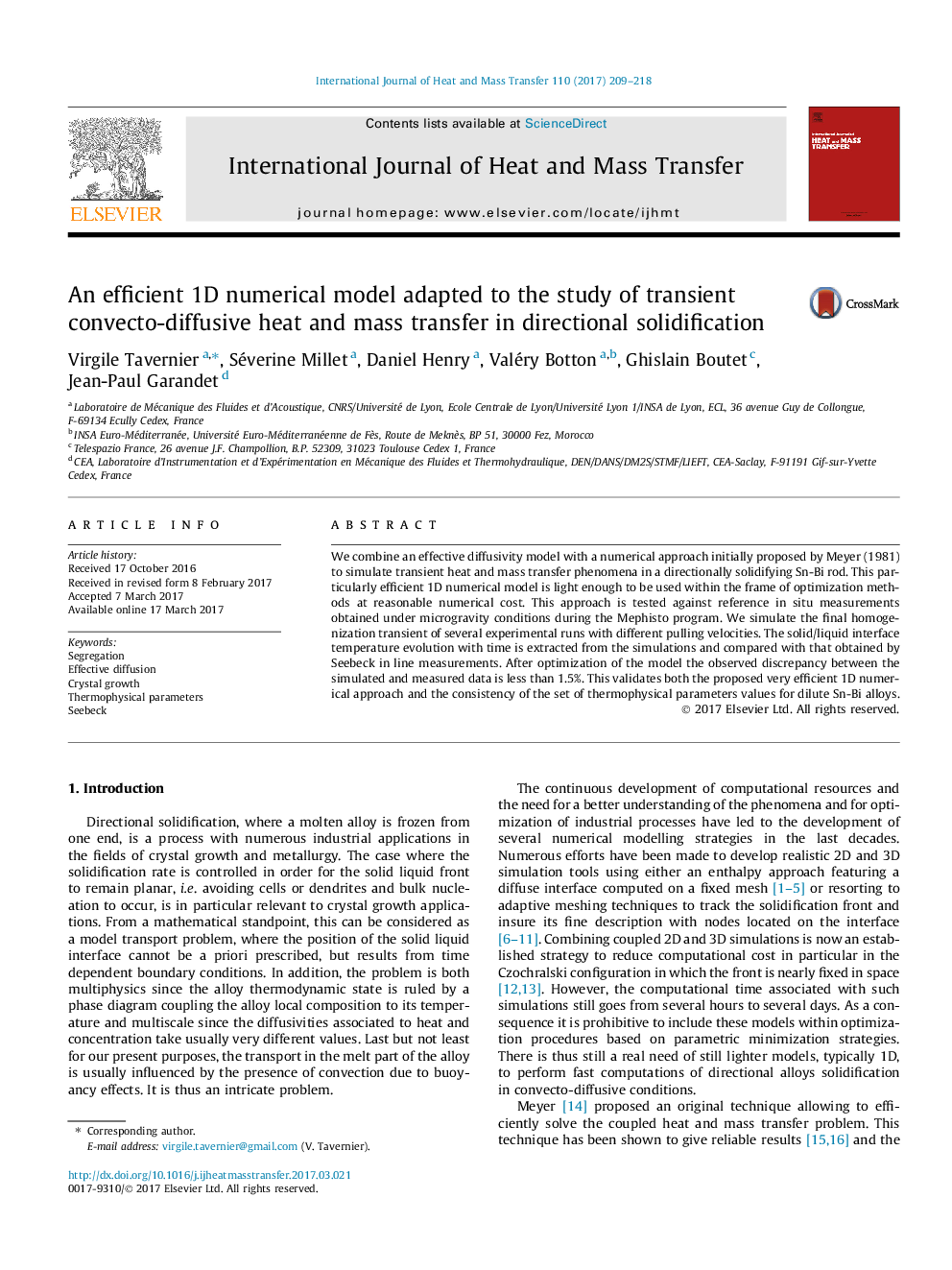| Article ID | Journal | Published Year | Pages | File Type |
|---|---|---|---|---|
| 4993562 | International Journal of Heat and Mass Transfer | 2017 | 10 Pages |
â¢A numerical convecto-diffusive model is proposed for binary alloy solidification.â¢A specific numerical method to deal with the moving solid-liquid interface is used.â¢The final solidification transient is experimentally investigated in a μg environment.â¢The model is compared to in situ monitored experimental interface temperature.â¢An optimization approach validates the model and the thermophysical parameter values.
We combine an effective diffusivity model with a numerical approach initially proposed by Meyer (1981) to simulate transient heat and mass transfer phenomena in a directionally solidifying Sn-Bi rod. This particularly efficient 1D numerical model is light enough to be used within the frame of optimization methods at reasonable numerical cost. This approach is tested against reference in situ measurements obtained under microgravity conditions during the Mephisto program. We simulate the final homogenization transient of several experimental runs with different pulling velocities. The solid/liquid interface temperature evolution with time is extracted from the simulations and compared with that obtained by Seebeck in line measurements. After optimization of the model the observed discrepancy between the simulated and measured data is less than 1.5%. This validates both the proposed very efficient 1D numerical approach and the consistency of the set of thermophysical parameters values for dilute Sn-Bi alloys.
